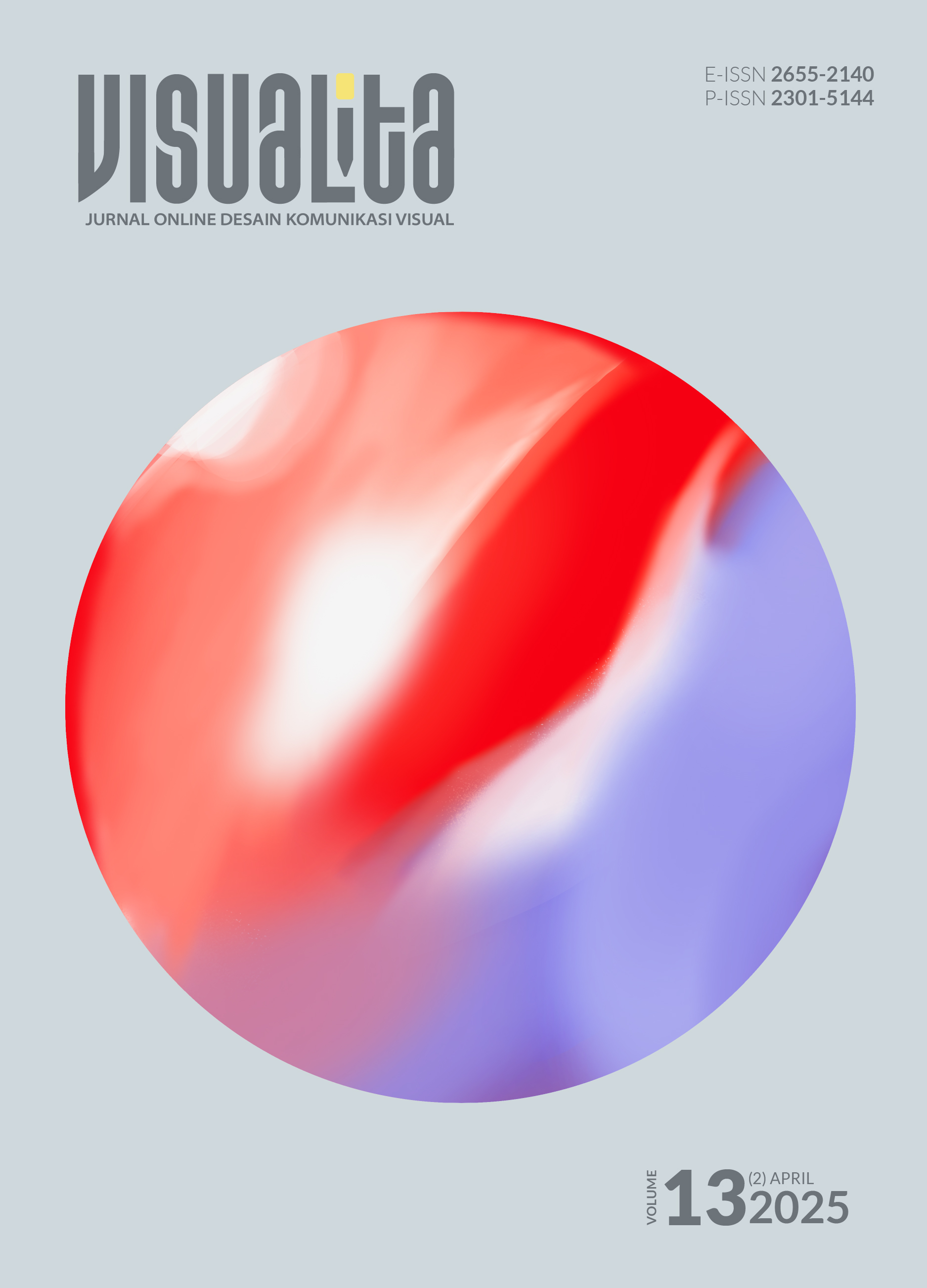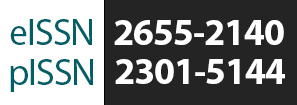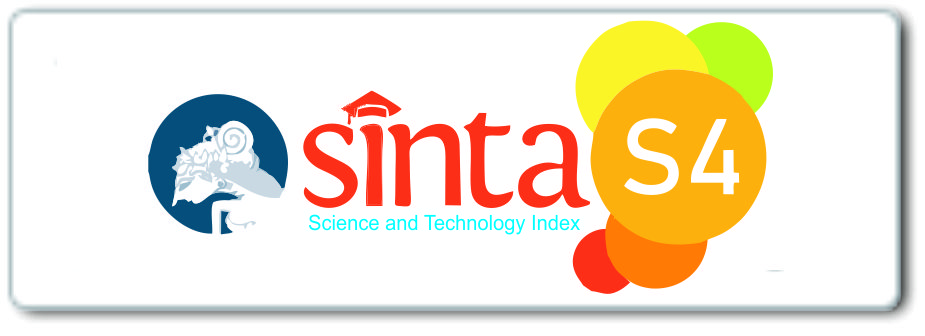Mobile Web as a Collaborative Travel Planning Media for Gen Z
Case Study: Gorontalo Beach Tourism
DOI:
https://doi.org/10.34010/visualita.v13i2.15318Keywords:
Generasi Z, Gorontalo, Pariwisata, Perencanaan, Mobile WebAbstract
The lack of interactive and visually appealing information about beach tourism destinations in Gorontalo, especially for Generation Z, presents a challenge in catering to this group accustomed to receiving information through social media. Generation Z, as a generation that has grown up in the digital era, tends to rely on online platforms, such as social media, for trip planning and gathering essential information. This study aims to design a mobile tourism website that meets the needs of Gen Z by providing interactive features, such as collaboration tools. The design thinking method was employed, starting with identifying user needs through questionnaires and in-depth interviews. The design results reveal that Gen Z requires interactive, collaborative information and features that allow sharing experiences via social media. The website was designed to align with these needs. Evaluation through user testing demonstrated that the website effectively supports Gen Z in planning their trips. In conclusion, the website not only simplifies trip planning for Gen Z but also accommodates their desire for collaboration with peers during the planning process.
Downloads
References
Almakayeel, N. (2023). Relationship Modeling of Travel Website Quality toward Customer Satisfaction Influencing Purchase Intention. Sustainability, 15(10), 8225.
Da Silva A. C., Da Rocha H., (2012). M-Travelling: Mobile Application in Tourism. International Journal for Infonomics (IJI). Vol. 5, Issue 3/4.
Dangmei J. dan Singh A. P., (2016). Understanding The Generation Z: The Future Workforce. South -Asian Journal of Multidisciplinary Studies (SAJMS). No. 3, Vol. 3:1-5
Damara G. H., Yusup P. M., Khaerul R., (2014). Perilaku Pencarian Informasi Pariwisata para Wisatawan Domestik di Rumah Mode. Bandung: Jurnal Kajian Informasi & Perpustakaan. Vol. 2, No. 1:27-35.
Darso Prajitno, Soewarno. 2002. Ekologi Pariwisata. Bandung: Angksa.
Kusuma Y. S. (2014). Pengaruh Brand Experience Terhadap Brand Loyalty Melalui Brand Satisfaction Dan Brand Trust Harley Davidson Di Surabaya. Surabaya: Jurnal Manajemen Pemasaran Petra. Vol. 2, No. 1:1-11
Lazuardi, M. L., & Sukoco, I. (2019). Design Thinking David Kelley & Tim Brown: Otak Dibalik Penciptaan Aplikasi Gojek. Organum: Jurnal Saintifik Manajemen dan Akuntansi, 2(1), 1-11. doi: https://doi.org/10.35138/organu m.v2i1.51
Olilingi F. Z. (2017). Potensi Investasi di Provinsi Gorontalo. Yogyakarta: Penerbit Deepublish (Grup Penerbitan CV Budi Utama)
Pujihastuti I., (2010). Prinsip Penulisan Kuesioner Penelitian. Bekasi: Jurnal Agribisnis dan Pengembangan Wilayah. Vol. 2, No. 1:43-56.
Purwanto A. (2022). Kota Gorontalo Pusat Perdagangan: Berjuluk Kota Serambi Madinah. Kompas Indonesia, https://www.kompas.id/baca/daerah/2022/03/04/kota-gorontalo-pusat-
Rashid R. A., Ismail R., Ahmad M., Abdullah N. A. C., Zakaria R., Mamat R., (2019). Mobile Apps in Tourism Communication: The Strengths and Weaknesses on Tourism Trips. Journal of Physics: Conferences Series.
Rozgonjuk D., Sindermanna C., Elhaic J. D., Montaga C. (2020). Fear of Missing Out (FoMO) and social media’s impact on daily-life and productivity at work: Do WhatsApp, Facebook, Instagram, and Snapchat Use Disorders mediate that association?. Addictive Behaviors, 110, 106487.
Rusdi J. F., (2019). Peran Teknologi Informasi pada Pariwisata Indonesia. Bandung: Accounting Information System.
Tim, (2023, Mei 25). Daftar 50 Pantai Terbaik Dunia 2023, Termasuk 2 dari Indonesia. CNN Indonesia, https://www.cnnindonesia.com/gaya-hidup/20230525110444-269-953793/daftar-50-pantai-terbaik-dunia-2023-termasuk-2-dari-indonesia/1.
Tunjungsari K. R. (2018). Karakteristik dan Persepsi Wisatawan Mancanegara di Kawasan Sanur dan Canggu, Bali. Jurnal Pariwisata Terapan. No.2, Vol. 2:108-121.
Werthner, H., Alzua-Sorzabal, A., Cantoni, L., Dickinger, A., Gretzel, U., Jannach, D., … Jannach, D. (2015). Future research issues in IT and tourism. Inf Technol Tourism. https://doi.org/10.1007/s40558-014-0021-9
Wibisono G. & Susanto W. E., (2014). Perancangan Website Sebagai Media Informasi Dan Promosi Batik Khas Kabupaten Kulonprogo. Jakarta: Jurnal Evolusi. Vol. 3, No. 2:64-69.
Wijoyo H., Cahyono Y. (2020). Generasi Z & Revolusi Industri 4.0. Purwokerto Selatan: CV. Pena Persada
Downloads
Published
Issue
Section
License
Copyright (c) 2025 Dewi Rara Rizky Purnamasari, Dianing Ratri

This work is licensed under a Creative Commons Attribution-NonCommercial 4.0 International License.
Authors who publish with Visualita agree to the following terms:
- Authors retain copyright and grant the journal right of first publication with the work simultaneously licensed under a Creative Commons Attribution-NonCommercial 4.0 International License.
- Authors are able to enter into separate, additional contractual arrangements for the non-exclusive public distribution and display of the journal's published version of the work (e.g., post it to an institutional repository or publish it in a book), with an acknowledgement of its initial publication in this journal.
- Authors wishing to include items (such as images or other media, or any creative works of others whether previously published or not) must contact the original copyright holder to obtain explicit permission to publish these items in Visualital. Writing permission should include: the title(s) of any copyrighted work, original place of publication if applicable, and an acknowledgement of having read Visualita copyright notice. Authors are responsible for obtaining this permission and keeping it in their own records for later verification.






